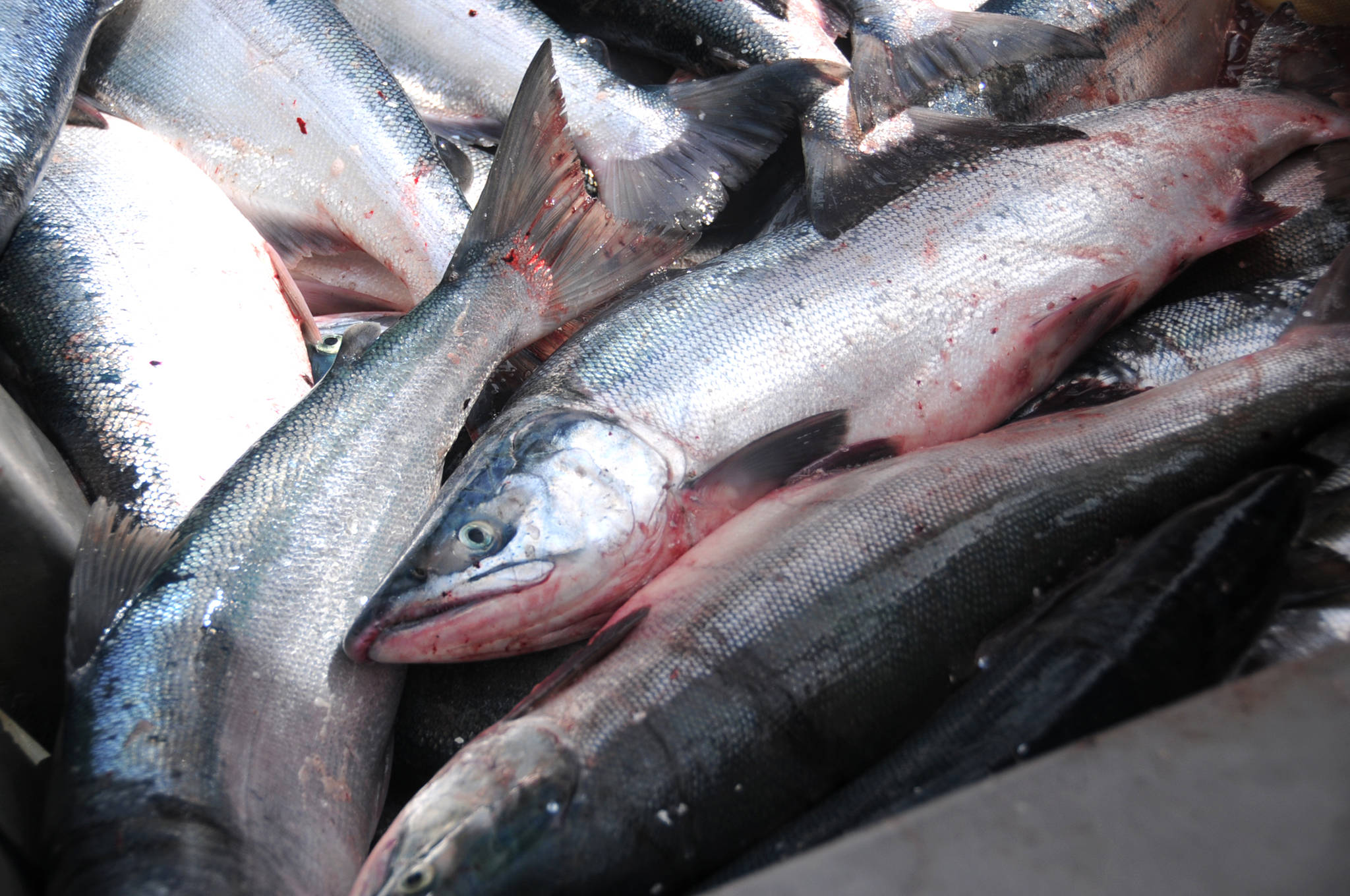About a year after the North Pacific Fishery Management Council first took up the Cook Inlet federal fishery management plan issue, the definition of what exactly the plan has to cover is still up for debate.
The council, one of eight nationally that manage fisheries in federal waters, has been working on a revision to the fishery management plan for salmon in the federal waters of Cook Inlet since September 2016, when the U.S District Court for Alaska ruled that an earlier decision to defer management entirely to the state wouldn’t stand. The council now has to rewrite an amendment to the plan to place federal management on the fishery.
That comes with a number of questions: does that include the part of the drift gillnet fishery that happens in state waters? Does it include the sportfisheries, both marine and freshwater, that harvest the same stock?
The United Cook Inlet Drift Association, the industry group representing the commercial drift gillnet fleet in Cook Inlet, argues that the regulations under the Magnuson-Stevens Fishery Conservation and Management Act require the council to manage the entire salmon fishery, from open ocean to spawning beds. That would include the sport harvest in Cook Inlet streams, some of the most highly trafficked recreational fisheries in Alaska.
The National Marine Fisheries Service, part of the National Oceanic and Atmospheric Administration, argues that there are two fisheries and the council only has authority to regulate the one occurring in the Exclusive Economic Zone, defined as the area between 3 and 200 nautical miles off U.S. shores. The streams and waters up to 3 nautical miles offshore are the state’s jurisdiction.
In a memorandum to the North Pacific Fishery Management Council for its April 9 2018 meeting, NOAA Alaska Section Attorney-Advisor Lauren Smoker wrote that UCIDA’s argument that Cook Inlet salmon only constitute one fishery doesn’t hold water.
“At no point in the decision does the Ninth Circuit suggest that the FMP did, or should, include State waters and State water salmon fisheries,” she said. “The decision does not describe the ‘fishery’ in question as including State water salmon fisheries managed by the State, or conclude that State water salmon fisheries are under the authority of the Council and NMFS.”
UCIDA has argued that the clause of the Magnuson-Stevens Act requiring sustainable management of a stock “throughout its range” would lead to federal standards being applied to salmon management. The organization has argued all along that under state management, too many fish are not harvested, overescaping into the rivers and impacting long-term sustainable salmon production.
The National Marine Fisheries Service argued that this is not the case — the federal government does not have the jurisdiction to extend management into state waters unless it seeks preemption of state authority, something UCIDA has said it does not want, Smoker said. UCIDA is partially basing that request on a phrase within the Magnuson-Stevens Act that require management of a species throughout its range. Smoker said that has been taken out of context.
“All the provisions of a state such as the Magnuson-Stevens Act must be considered as harmonious whole and one provision cannot be interpreted or applied with regard to other provisions,” she wrote.
The council is still muddling through the process of identifying what exactly a fishery management plan for Cook Inlet’s salmon fishery might look like. A letter from James Balsiger, the Alaska administrator for NMFS, to council chairman Dan Hull recommended the council “initiate a determination as to whether the sport fishery for salmon in the West Area (Exclusive Economic Zone) requires conservation and management.” The council previous removed it because the members were satisfied with state management and the costs of federal management would outweigh the benefits, Balsiger wrote.
After pressure from UCIDA, the council also passed a motion to form a committee of stakeholders to weigh in on the FMP writing process. The scope of work includes providing recommendations to the council on specific management measures, bycatch reporting and the social, economic and community impacts of management.
The call hasn’t been issued yet but NMFS plans to do so relatively soon, said Jim Armstrong, the plan coordinator with the council. One of the reasons for the definition of the scope of work is to help guide the committee members through the council process, which they may not be familiar with, he said.
“Any council committee is an advisory body to the council and serves the council,” he said. “…because this committee will likely have as members a lot of people who likely haven’t had experience with the council process, we thought we would formalize their mission a little more clearly.”
The chairman will help determine the composition of the group, which could include a variety of stakeholders from sportfishermen to commercial fishermen and geographic areas from the Matanuska-Susitna Valley to Kodiak. The coordinators also haven’t decided whether to hold the meetings on the Kenai Peninsula or in Anchorage yet, Armstrong said.
The council issued a call for comments about a scope of work for the salmon committee from October 2017 through Feb. 1, 2018, many of which included nominations for a salmon committee. A number of Kenai Peninsula commercial fishermen have submitted their names for the committee, and the Kenai River Sportfishing Association and the Matanuska-Susitna Borough’s Fish and Wildlife Commission have asked to be included.
Reach Elizabeth Earl at eearl@peninsulaclarion.com.

